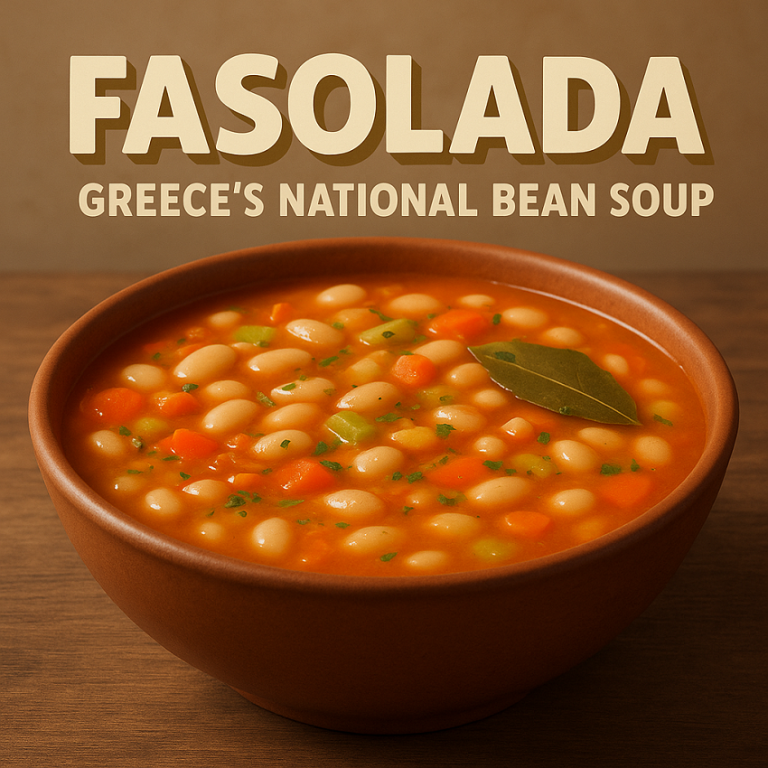
Avgolemono soup, a delightful staple of Greek cuisine, blends the comforting flavors of chicken broth, rice, and a creamy egg-lemon sauce. This dish is not only a favorite in Greek households but also a symbol of warmth and hospitality. In this article, we’ll explore the history, ingredients, preparation, variations, and cultural significance of avgolemono soup.
A Brief History
The origins of avgolemono can be traced back to ancient Greece, where the combination of eggs and lemon was celebrated for its flavor and health benefits. References to avgolemono-like sauces appear in ancient texts, showcasing the Greeks’ appreciation for the balance of acidity and richness. Over the centuries, avgolemono has evolved, becoming a cherished dish in both Greek homes and restaurants. It is often served as a comforting meal during cold weather or when someone is feeling under the weather, reinforcing its status as a nurturing dish.
Key Ingredients
1. Chicken Broth
The foundation of avgolemono is a rich and flavorful chicken broth. Homemade broth is preferred for its depth of flavor, but store-bought options can also be used. The broth is typically prepared by simmering chicken with aromatic vegetables like onions, carrots, and celery, which infuse the liquid with savory goodness.
2. Rice
Short-grain rice, such as Arborio or jasmine, is commonly used in avgolemono. The rice absorbs the flavorful broth and adds a satisfying texture to the soup. Some variations use orzo or other small pasta shapes, which also complement the dish well.
3. Eggs
The eggs in avgolemono serve to thicken the soup and create a creamy texture. They are combined with lemon juice to create the signature avgolemono sauce, which is responsible for the soup’s unique flavor profile.
4. Lemon Juice
Fresh lemon juice is essential for giving avgolemono its distinctive tangy flavor. It brightens the dish and balances the richness of the broth and eggs. The acidity of the lemon also enhances the overall flavor of the soup, making it refreshing.
5. Herbs
Fresh herbs, such as dill or parsley, are often added for garnish, enhancing the flavor and freshness of the soup. These herbs not only provide a pop of color but also elevate the overall taste, making it more aromatic.
Preparation Method
Step 1: Prepare the Broth
Start by making the chicken broth. Place a whole chicken or chicken parts in a large pot with water, onions, carrots, celery, and a pinch of salt. Simmer for about an hour until the chicken is cooked through and tender. Remove the chicken, strain the broth to remove the vegetables, and set aside. This step is crucial as it ensures a clear, flavorful broth.
Step 2: Cook the Rice
In the strained broth, add short-grain rice and simmer until the rice is tender, usually about 15-20 minutes. Stir occasionally to prevent the rice from sticking to the bottom of the pot. If you prefer a thicker soup, you can use less broth or add more rice.
Step 3: Make the Avgolemono Sauce
In a bowl, whisk together eggs and fresh lemon juice. To temper the eggs and avoid curdling, gradually add a ladle of hot broth to the egg mixture while whisking continuously. This helps to raise the temperature of the eggs without cooking them, ensuring a smooth sauce.
Step 4: Combine and Serve
Once the rice is cooked, remove the pot from heat. Slowly stir the tempered egg-lemon mixture into the pot of broth and rice, mixing gently until well combined. Serve hot, garnished with fresh herbs. A sprinkle of extra lemon juice can also enhance the flavor just before serving.
Variations of Avgolemono Soup
While the classic avgolemono soup features chicken, variations exist that cater to different tastes and dietary preferences:
Vegetarian Avgolemono
For a vegetarian version, vegetable broth can be used as the base, and the soup can be enriched with various vegetables such as carrots, peas, and spinach. This version still retains the creamy egg-lemon sauce, making it a comforting option for non-meat eaters.
Seafood Avgolemono
In coastal regions of Greece, seafood avgolemono is popular. This variation substitutes fish or shrimp for chicken, adding a unique twist to the traditional recipe. The seafood is usually added towards the end of cooking to prevent overcooking.
Orzo Avgolemono
Some recipes replace rice with orzo pasta, which adds a different texture and heartiness to the soup. Orzo cooks quickly and absorbs the flavors of the broth, making it a great alternative.

Cultural Significance
Avgolemono soup is more than just a meal; it represents Greek culture’s emphasis on family and togetherness. It is often served during family gatherings, holidays, and special occasions, symbolizing warmth and hospitality. The soup is particularly popular during winter months and is frequently offered to those feeling unwell, highlighting its comforting qualities.
A Symbol of Hospitality
In Greece, serving avgolemono to guests is a gesture of hospitality. It reflects the tradition of sharing food and nurturing relationships, as families come together to enjoy a warm bowl of soup. The act of cooking and serving avgolemono is a way of expressing love and care for friends and family.
Celebrations and Traditions
Avgolemono is often featured during significant events, such as Easter celebrations, where it may accompany roasted lamb. The soup’s refreshing lemon flavor complements the rich dishes typically served during festive occasions. It is also common to find avgolemono on tables during Sunday family dinners, reinforcing its role in communal dining.
Conclusion
Avgolemono soup is a timeless dish that offers a taste of Greek tradition and comfort. With its creamy, tangy flavor and nourishing ingredients, it continues to be a beloved choice for many. Whether served on a chilly day or at a family gathering, avgolemono embodies the essence of Greek hospitality and the importance of sharing meals with loved ones.
Embrace this classic dish in your kitchen, and experience the warmth and richness of Greek cuisine. The process of making avgolemono is as rewarding as enjoying it, offering a chance to connect with tradition and create lasting memories around the dinner table. As you savor each spoonful, you’ll not only enjoy a delicious meal but also partake in the cultural heritage that makes avgolemono soup a cherished favorite in Greek households.




